In 1975 the poet Allen Ginsberg was in hospital. At a later poetry reading he explained the causes in an introduction to a poem that he had written from his hospital bed.:
I got real angry and wound up sick in a hospital, for various karmic reasons, and woke up looking out the window, and started taking notes on what the universe looked like outside. New York Hospital, 72nd Street, East River.. “At gauzy..” This was written May 20th at the time of the Mayaguez crisis – Anyone remember that at all? – or (has) that phantom faded into memorial history, memorial cello-time. (Henry) Kissinger and (Gerald) Ford bombed the entire Eastern hemisphere because they got mad one morning over coffee! 1975
Ginsberg implies that his illness and physical symptoms were somehow self inflicted and also the result of his response to the diseased state of the world. Trapped in a hospital bed he contrasts his own temporary and pained existence with the more eternal nature (and beauty) of the city skyline.
It reminds me of W.H.Auden’s theory of the psychosomatic causes of illness.1 He once ascribed Marx’s boils to frustrated love and near the end of his life he remarked to a friend that it was odd that Freud had died of cancer of the jaw: “Who’d have thought he was a liar.”
It’s probably a very good thing that we have medical doctors for medicine and poets for something else.
Ginsberg’s poem Hospital Window opens with a description of a hazy dusk and the beauty of the buildings – the castles and the water towers of the skyline:
At gauzy dusk, thin haze like cigarette smoke
ribbons past Chrysler Building’s silver fins
tapering delicately needletopped, Empire State’s
taller antenna filmed milky lit amid blocks
black and white apartmenting veil’d sky over Manhattan,
offices new built dark glassed in blueish heaven–The East
50’s & 60’s covered with castles & watertowers, seven storied
tar-topped house-banks over York Avenue, late may-green trees
surrounding Rockefellers’ blue domed medical arbor–
Geodesic science at the waters edge
And then the intrusion of a harsher reality
Cars running up
East River Drive, & parked at N.Y. Hospital’s oval door
where perfect tulips flower the health of a thousand sick souls
trembling inside hospital rooms.
But the view persists
Triboro bridge steel-spiked
penthouse orange roofs, sunset tinges the river and in a few
Bronx windows, some magnesium vapor brilliances’re
spotted five floors above E 59th St under grey painted bridge
trestles. Way downstream along the river, as Monet saw Thames
100 years ago, Con Edison smokestacks 14th street,
& Brooklyn Bridge’s skeined dim in modern mists–
Pipes sticking up to sky nine smokestacks huge visible–
U.N. Building hangs under an orange crane, & red lights on
vertical avenues below the trees turn green at the nod
of a skull with a mild nerve ache.
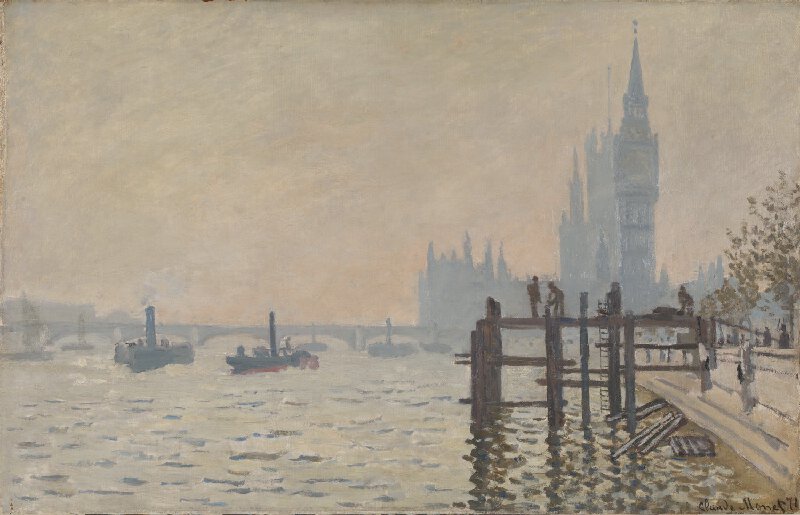
100 years ago, Con Edison smokestacks 14th street,
& Brooklyn Bridge’s skeined dim in modern mists–
Pipes sticking up to sky nine smokestacks huge visible– “The Thames Below Westminster” Claude Monet c.1871
And then “Dim dharma” – the nature of reality regarded as a universal truth taught by the Buddha – what brought him to the hospital intrudes on the scene with the detailed immediate description of physical symptoms – stark contrast with the enduring scene outside the tower window. And to his rage at the disease of the world that brought him there.
World self ton billions metal grief unloaded
Pnom Penh to Nakon Thanom, Santiago & Tehran.
At the end the poem circles back to enclose the scene outside and his mental state within.
Fresh warm breeze in the window, day’s release
>from pain, cars float downside the bridge trestle
and uncounted building-wall windows multiplied a mile
deep into ash-delicate sky beguile
my empty mind. A seagull passes alone wings
spread silent over roofs.
(The complete text of the poems in this post are below.)
In Nicholas Christopher’s 1972 #43 it’s winter and the trucks are salting the streets, the airports are closed
Meanwhile, through the frozen window,
an ocean liner, white as an iceberg
is sailing down the Hudson
to the open sea.
Galway Kinnell’s Room of Return has ocean liners too
Room over the Hudson
Where a naked light bulb
Lights some coathangers, whiskey bottles,
Umbrellas, socks, poems, shoes,
A potted plant trimmed like the crucifixion,
From which, out the front window,
You sometimes can see
The Vulcania or the France
Or a fat Queen
Steaming through the buildings across the street,
Karl Shapiro observes the same scene in his poem Future-Present as the ocean liners pass majestically into history.
Remember the old days when the luxury liners
in narrow Manhattan
appeared piecemeal in segments at the end of
east-west
streets,
I know I’ve see a photo of that – with the ocean liner at the end of the street. But where?
These days, he says, through the window you can see the skyliners moving north past St.John’s Cathedral, over Grant’s Tomb
into the blue-gray morning of the future-present.
Things ain’t what they used to be. “Twas ever thus it seems.
So here are the poems – a small selection of views of New York City through the window from Allen Ginsberg, Nicholas Christopher, Galway Kinnell, Karl Shapiro, L.E.Sissman and James Schuyler with Gregory Corso having the last and ultimate manic word.
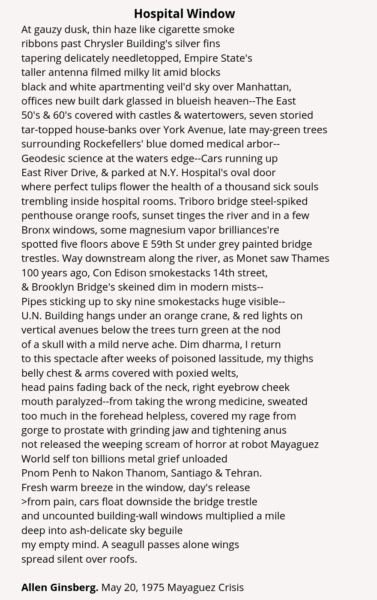
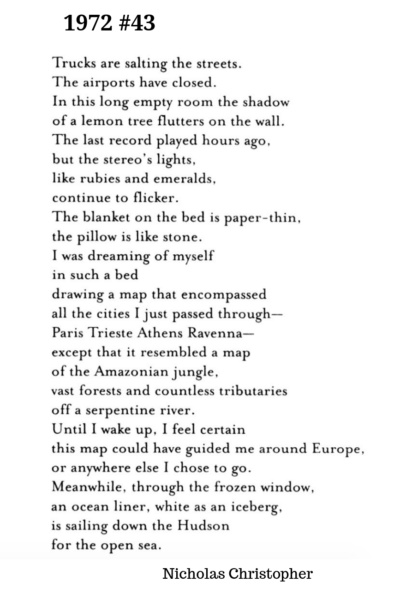
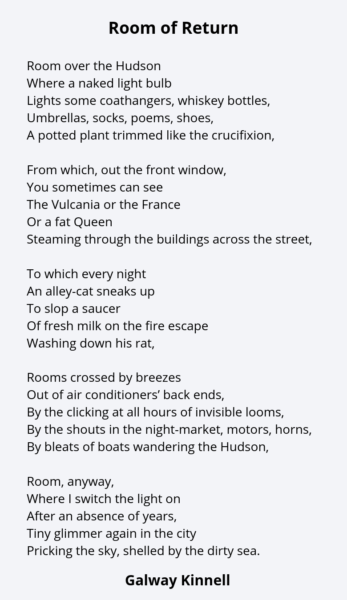
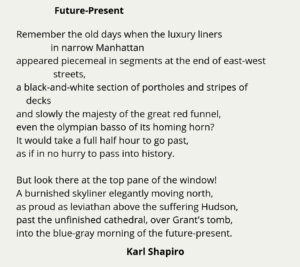
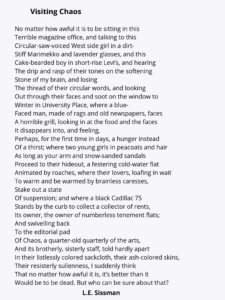

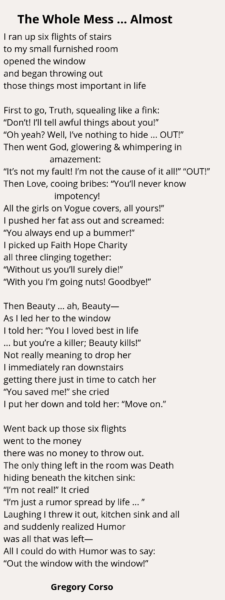
1. W. H. Auden: A Biography By Humphrey Carpenter
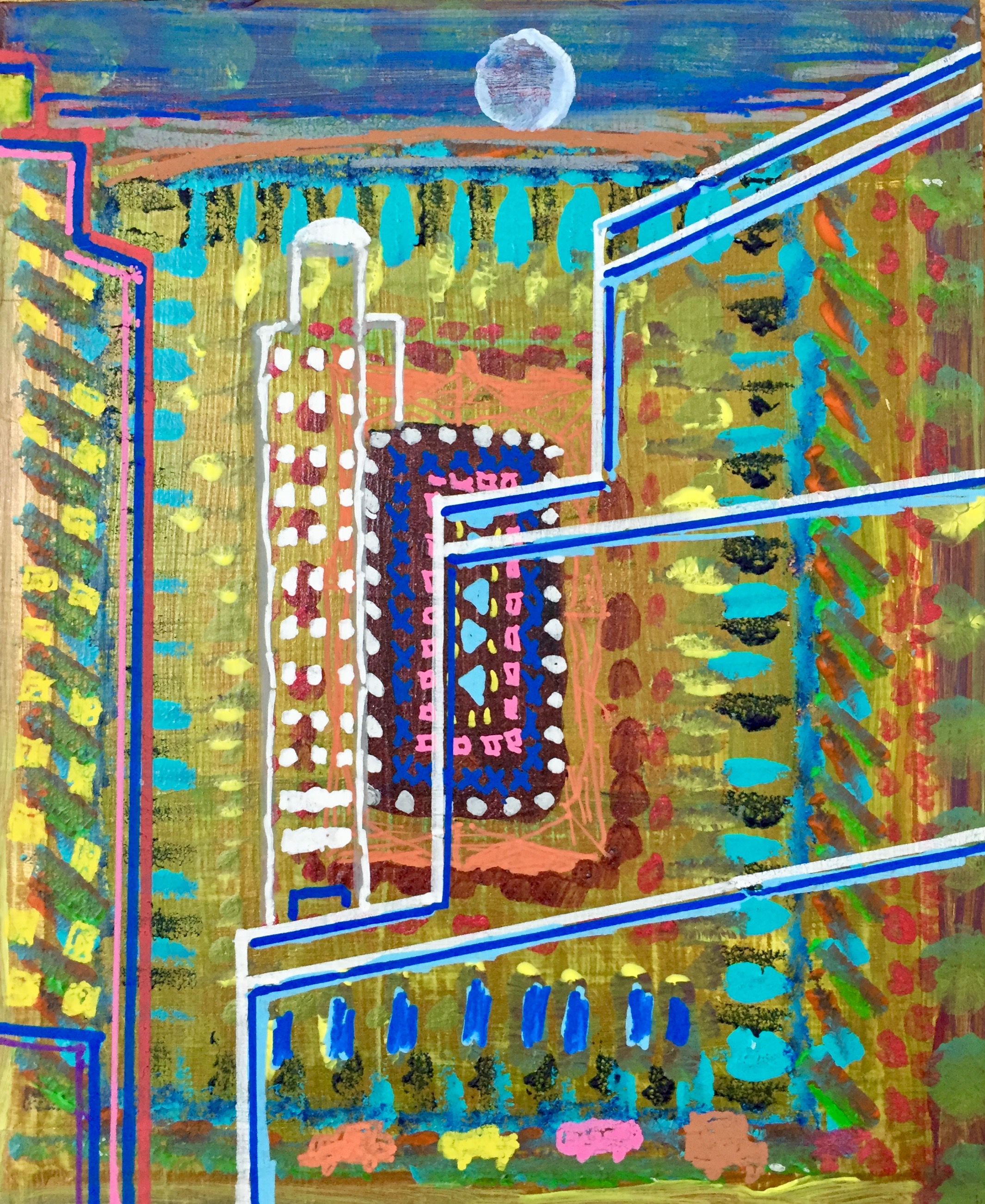
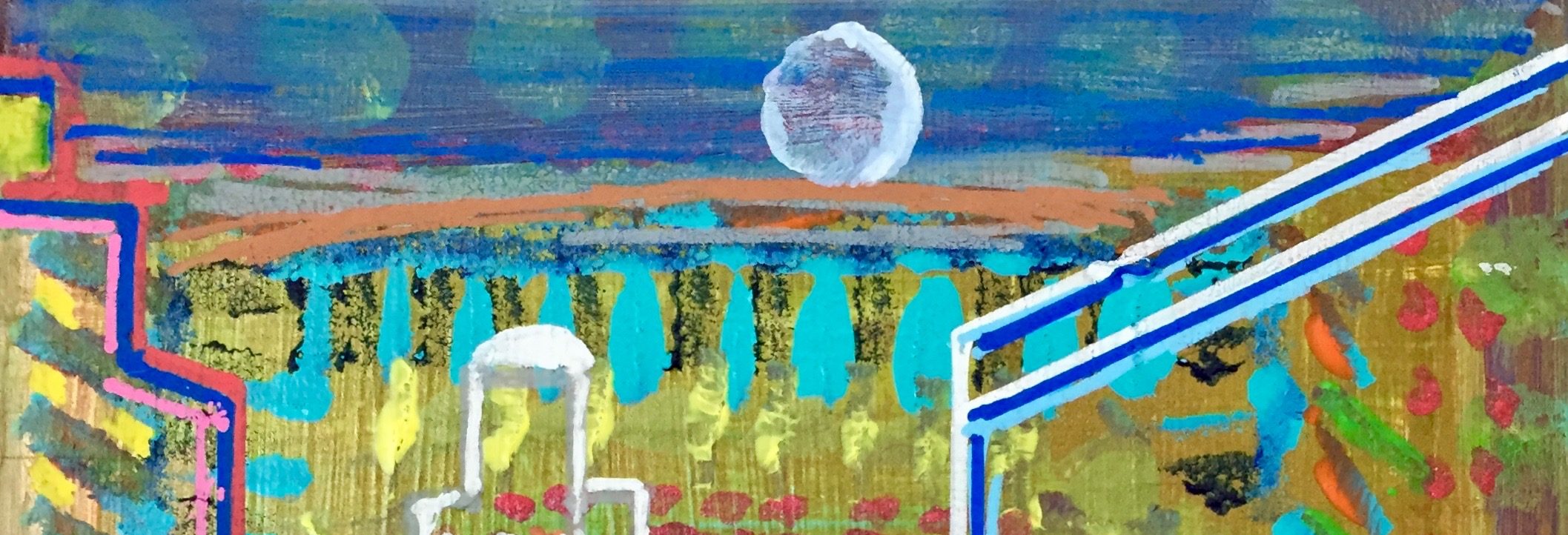


The Corso poem is brilliant!
Isn’t it just! Perfect as a piece of imaginative mania. It’s one way to declutter your life and start anew. You can see it happening. Then “Out the window with the window” and there – you just have to laugh.